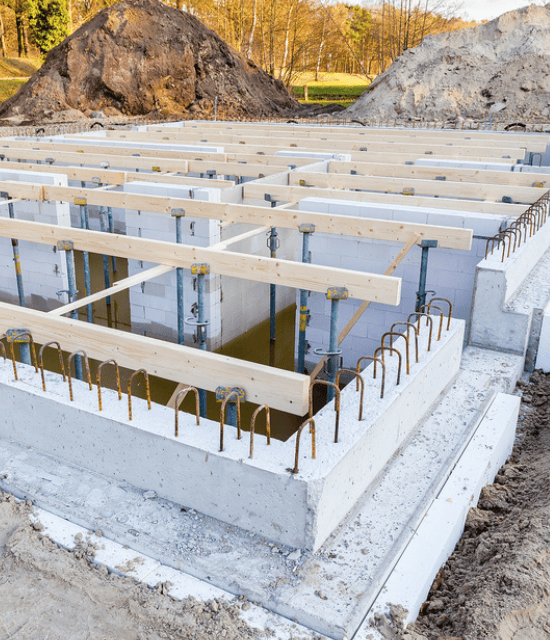If you’ve ever worked on a concrete project, you might have found yourself wondering: Can you mix different types of concrete? Maybe you had some leftover bags from an old project, or you’re trying to save money by using what you already have. It’s a fair question, and the answer is—well, it depends.
Mixing different types of concrete isn’t always a bad idea, but it’s not always a good one either. Let’s break it down so you can make the best choice for your project.

Understanding Different Types of Concrete
Before we get into mixing, you need to understand that not all concrete is the same. Concrete is made up of cement, water, sand, and gravel, but the way these ingredients are mixed and the types of additives included make a huge difference in strength, durability, and drying time.
For example, high-strength concrete (like those rated at 5,000 psi or more) is designed to handle heavy loads, making it ideal for bridges or skyscrapers. On the other hand, regular concrete (around 3,000 psi) is used for sidewalks, patios, and driveways. Then, you have quick-setting concrete, which hardens fast, and lightweight concrete, which is used in special building projects.
If you mix two different types, you might get unexpected results, and not always the ones you want.
What Happens When You Mix Different Concrete Types?
So, what actually happens when you mix different types of concrete? The short answer is that it depends on the specific types you’re combining.
- Uneven Strength – One of the biggest risks is that the final mix won’t be as strong as you expect. Let’s say you mix a high-strength concrete with a regular one. The stronger mix might not properly bond with the weaker one, creating weak spots in the structure.
- Inconsistent Curing Time – Different concrete mixes have different curing times. If one part of your mix dries faster than the other, it can lead to cracking and separation. For example, quick-setting concrete mixed with a regular batch might dry unevenly, leading to a weak final product.
- Chemical Reactions – Some concrete mixes include special additives like accelerators, retarders, or air-entraining agents. When you mix two types, these chemicals might react in ways you didn’t expect, potentially ruining the batch.
Real-Life Example: The Driveway Disaster
Let me tell you about my neighbor Joe. Joe wanted to extend his driveway. He had a few bags of leftover quick-set concrete from a fence project and a fresh batch of regular concrete for the main driveway.
Thinking it would be fine, he mixed them together. At first, everything looked great. But within a few months, cracks started appearing where the different types had been combined. Some areas hardened too fast, while others took too long, creating uneven stress. In the end, he had to redo the whole section. That’s an expensive lesson to learn!
Can You Ever Mix Different Types of Concrete?
While it’s usually not a great idea, there are some cases where you might get away with it.
If the types of concrete are very similar—say, two regular concrete mixes with slightly different strengths—it might not be a disaster. However, experts recommend blending the dry materials first before adding water. This helps ensure the different cements mix evenly rather than creating weak spots.
Another way you might mix different concretes is by layering instead of blending. For instance, you could use a high-strength mix as a base and then pour a regular mix on top. However, for this to work well, the first layer needs to be properly cured before adding the second layer.
What Do The Experts Say?
According to the Portland Cement Association, “Consistency in mix design is crucial to ensure predictable performance.” This means that when you start changing things up, you increase the risk of structural failure. Even small changes in cement composition can reduce concrete’s final strength by as much as 20%.
In a study from the American Concrete Institute, tests showed that mixing different types of concrete led to variations in setting times and compressive strength. In some cases, the final strength was 30% lower than expected. That’s a huge difference if you’re building something that needs to last!
What’s the Best Approach?
If you’re tempted to mix different types of concrete, the best thing to do is stop and think about the risks. Are you working on something structural, like a foundation or a load-bearing wall? If so, don’t take chances—stick to a single, well-mixed batch.
If you’re just making a small stepping stone or patching up a sidewalk, you might be able to get away with it. But even then, it’s better to use a single type of concrete to ensure consistency.
At the end of the day, concrete isn’t something you want to gamble with. The cost of a redo is often much higher than the cost of just doing it right the first time. If you’re ever unsure, check the manufacturer’s instructions or ask a professional.
Final Thoughts
Can you mix different types of concrete? Sure, you can. But should you? Probably not. Unless you’re an expert who knows exactly how different mixes will react, you’re better off using a single type of concrete for each project. Mixing different kinds might seem like a way to save money or use up leftover materials, but in the long run, it can cause more problems than it solves.
So, next time you’re thinking about mixing different concretes, ask yourself: Is it worth the risk? Because when it comes to concrete, it’s always better to be safe than sorry.

